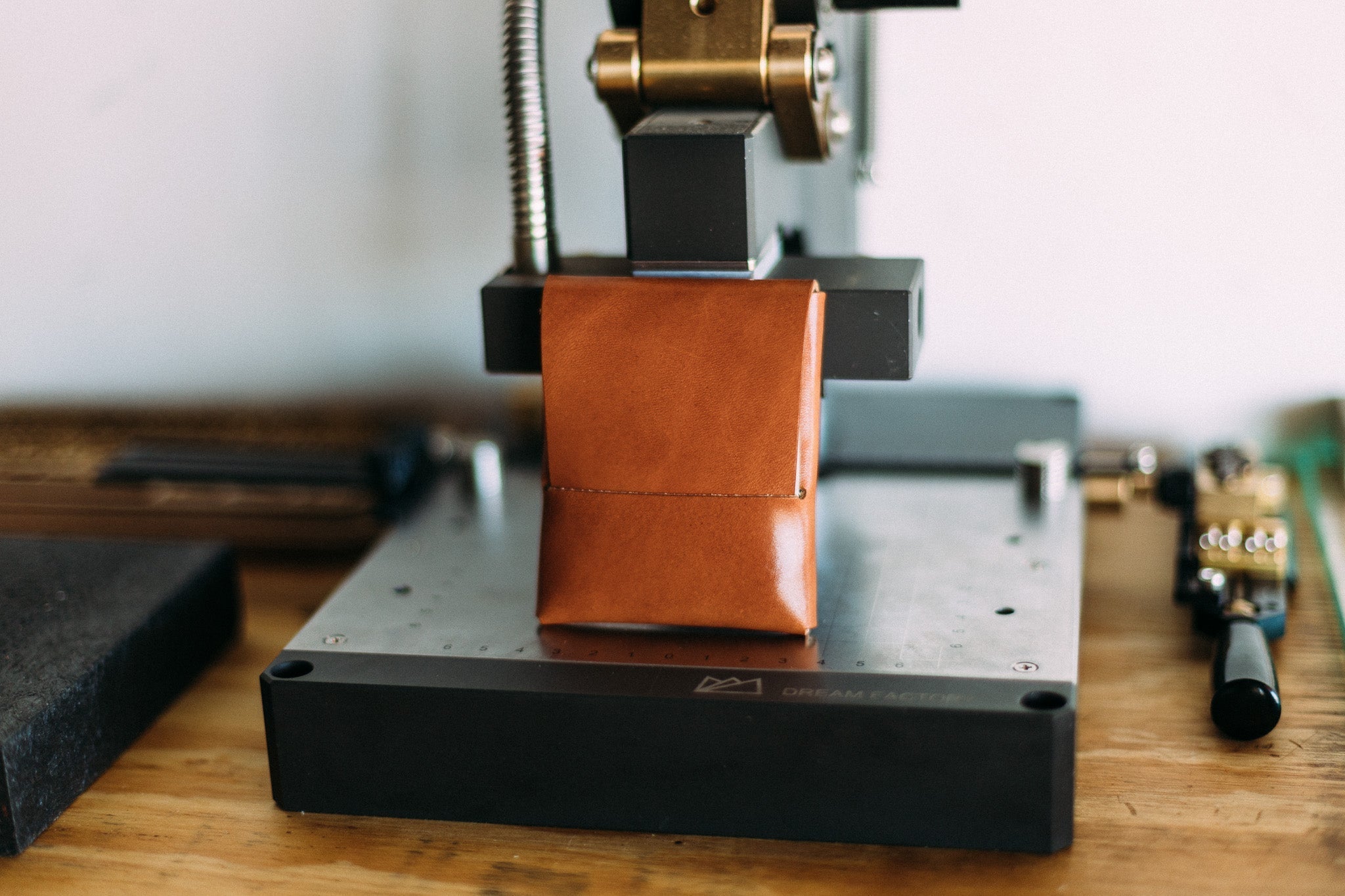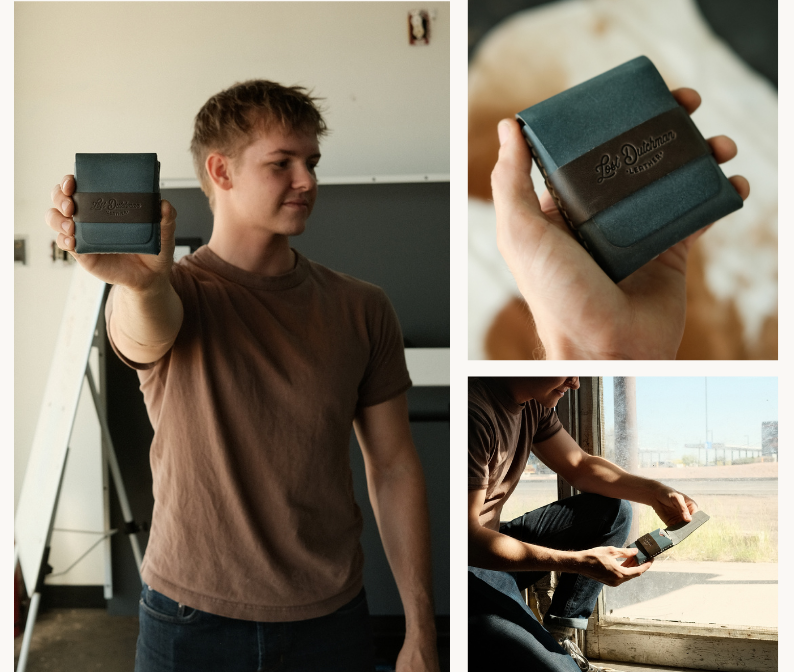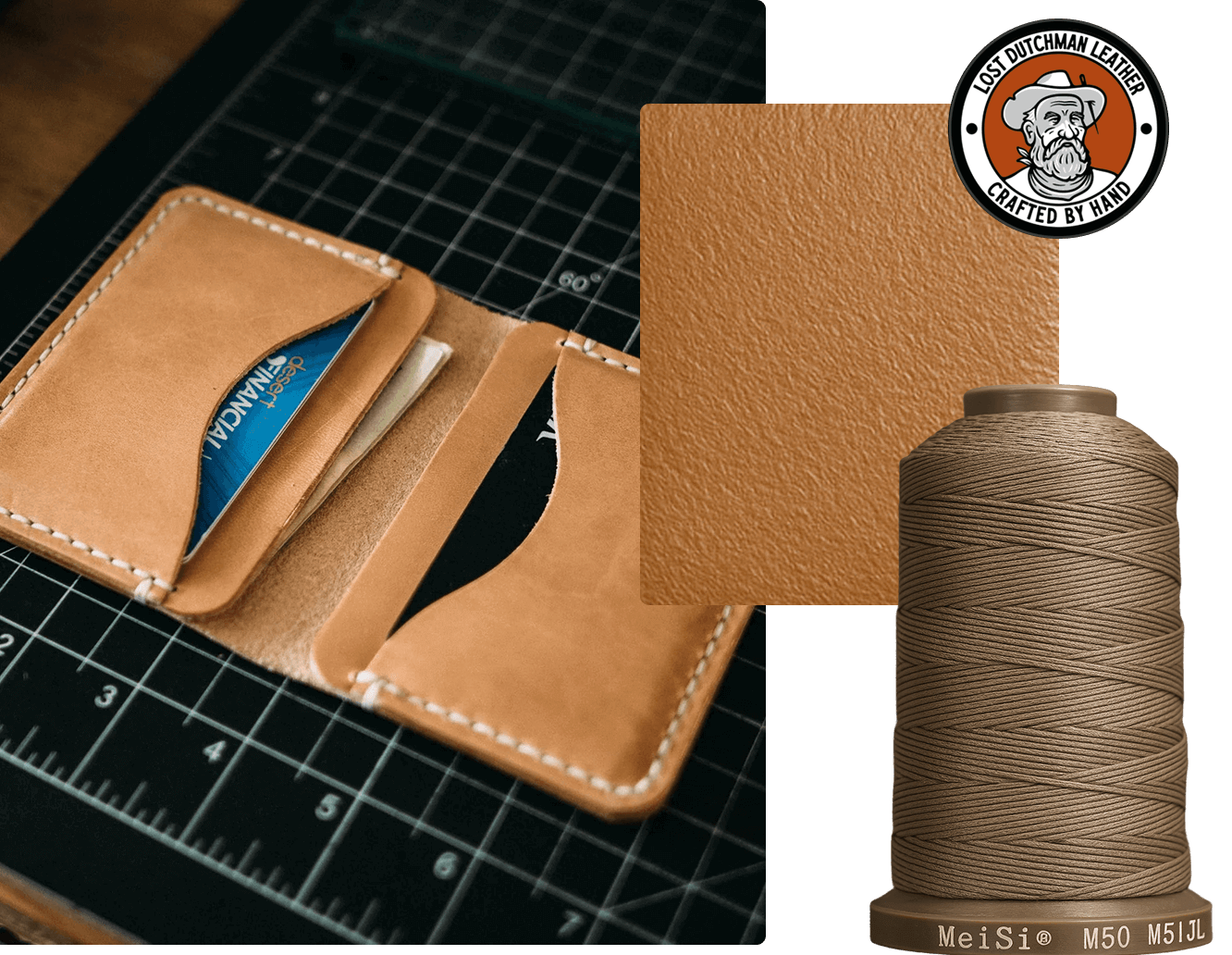
The Making of the Franklin Wallet
Every enduring product begins with a question: why isn’t this done better? The making of the Franklin Wallet grew from exactly that thought. The wallets widely available on the market were either too bulky, forcing their owners to carry bricks in their pockets, or so thin and fragile that they barely survived a season. Neither option spoke to the values of practicality, durability, and elegance.
At Lost Dutchman Leather, frustration became opportunity. The Franklin was designed not just as another wallet, but as a statement of balance, sleek without being flimsy, strong without being cumbersome. At its core, Franklin wallet craftsmanship represents an obsession with detail, a commitment to tradition, and the belief that everyday carry should be as refined as it is reliable.
Identifying the Problem
Flaws in Mass-Produced Wallets
Walk into any department store and you’ll find shelves of wallets, almost identical in look and feel. Shiny coated surfaces, heavy stitching that frays within weeks, and interiors packed with features most people never use. They feel generic because they are, made by machines in massive runs, each wallet a clone of the next.
The result is predictable: seams tear, leather cracks, and corners curl. Many of these wallets end up in drawers or bins long before they should.
The Vision for Balance and Durability
The Franklin Wallet aimed to solve a simple but universal problem: create something you could slip into your pocket every day for years without complaint. It had to carry enough, but not too much. It had to feel strong, but not heavy. It had to age gracefully, becoming better over time rather than falling apart.
That balance of form and function also defines other designs within Lost Dutchman Leather’s range, from minimalist card holders to traditional bifold wallets.
From Concept to Early Sketches
Sketching Ideas and Layouts
Every product begins as an idea, but ideas are fragile until captured. Sketches became the first step toward making the Franklin real. Dozens of variations were drawn, exploring folds, pockets, and sizes. Some looked too busy, others too stripped back.
The goal wasn’t perfection on paper. It was exploration, creating a language of shapes and layouts to test against the demands of daily carry.
Crude Prototypes to Test Usability
Sketches have limits. A design that looks elegant in 2D may prove awkward in 3D. To test early ideas, crude prototypes were built from cardboard, scraps of old leather, and even folded paper. These rough models were revealing.
One design looked flawless on paper but proved impossible to use: card slots so tight they bent cards when inserted. Another folded neatly but created too much bulk when filled. These failures weren’t setbacks, they were lessons.
This trial-and-error method is central to Franklin wallet craftsmanship. The design had to be lived with, handled, and criticised before it could become an heirloom.
Choosing the Right Materials
Why Full-Grain Leather Was Non-Negotiable
Even the finest design fails when made from weak materials. For the Franklin, only full-grain leather would suffice. This top layer of the hide retains its natural fibres, giving it strength, texture, and longevity. Unlike “genuine leather” or corrected hides, it doesn’t peel or crack under pressure.
Full-grain is nature’s own design, resilient and unique. Just as no two trees share the same grain, no two hides share identical markings. Every Franklin is therefore subtly distinct, a one-of-one.
Partnerships with Trusted Tanneries
Quality materials depend on relationships. Choosing the right tannery was not about price but about values. The Franklin required leather prepared with patience and consistency. That meant working with suppliers who shared a dedication to heritage methods.
This sourcing philosophy extends to the entire product line. The same standards apply whether it’s the supple hide shaping The Belt or the leather forming The Catch-All tray. Each begins with raw material chosen as carefully as a chef selects produce for a meal.
First Prototypes: Crafting by Hand
Early Mistakes and Lessons Learned
With hides in hand, cutting and stitching began. The first versions were clumsy: edges uneven, stitches inconsistent. One early attempt even collapsed under use, cards slipping out of their slots.
Yet these mistakes were invaluable. They showed exactly where refinement was needed, and reinforced the philosophy that patience and persistence define craftsmanship.
The Breakthrough Prototype
The first polished prototype took hours of slow, deliberate work: cutting clean patterns, stitching seams with the saddle technique, burnishing edges until they gleamed. The result was slim, functional, and finally felt like “the one.”
But perfection is a moving target. Even this breakthrough revealed small issues, a curve to adjust, a pocket to widen. Craft is a conversation, not a destination.
Testing in the Real World
Everyday Use and Stress Testing
A wallet must endure what its owner endures. Prototypes were stuffed with cards, bent into pockets, sat upon during long drives, and pulled out dozens of times a day. They faced sunlight, sweat, and dust. Each test simulated years of daily use compressed into weeks.
Feedback from Family and Friends
Others were asked to test prototypes too. Their feedback proved essential. One friend noted that accessing a single card was difficult, while another found a corner edge uncomfortable in the hand. These were small details, but they mattered.
The testing phase made one truth clear: durability isn’t declared in a workshop; it is earned through life.
Refinement Through Iteration
Adjusting Dimensions and Stitching
Armed with feedback, refinements began. Slots were widened a millimetre at a time. Stitches were reinforced at stress points. The cut of the wallet was adjusted to sit more comfortably in the pocket.
Each tweak brought the Franklin closer to its final form. Like an architect refining blueprints after every inspection, the artisan adjusted until every angle, curve, and seam felt inevitable.
Evolving into the Mini Franklin
The process eventually inspired a companion piece: the Mini Franklin. Smaller, leaner, and tailored for those who carry less, it condensed the same philosophy into an even simpler form.
This evolution proved that Franklin wasn’t just a product but a platform for refinement.
Finding the Right Craftspeople
Searching for Skilled Artisans
As demand grew, the founder faced a new challenge: production. Alone, he could not keep pace. But entrusting the Franklin to others required trust. Not every artisan would do.
Workshops were visited, craftspeople interviewed. The search was not only for skill but for philosophy. The Franklin demanded patience, and not every workshop shared that value.
Building a Dedicated Team
Eventually, a small team of artisans was assembled. Each was trained not only in technique but in ethos. Together, they became stewards of Franklin wallet craftsmanship, capable of producing at scale without compromise.
They weren’t simply employees; they were guardians of consistency.
Production with Integrity
Quality Control Standards
Every wallet undergoes strict checks. Each cut, each seam, each edge is inspected. A single crooked stitch means rejection. The aim is simple: if a wallet doesn’t meet the same standards as the original prototype, it does not leave the bench.
Balancing Growth with Craftsmanship
This process slows production, but it preserves trust. Scaling never meant cutting corners. From the Vertical Dutchman to the wider bifold range, every piece is built with the same philosophy: better to make fewer pieces of lasting quality than many destined for landfill.
Launch and Legacy
The First Release of the Franklin
When the Franklin was first released, there was no flashy campaign. The wallet itself was the message. Customers recognised its difference instantly, slim, sturdy, timeless.
Orders grew, and soon the Franklin became a flagship, representing what Lost Dutchman Leather stood for.
Customer Stories and Lasting Impact
Over the years, customers have shared stories that prove the Franklin’s value. One described carrying his Franklin across Europe, each scratch marking a memory. Another replaced a worn-out wallet and wrote back months later to say he’d “finally found the one.”
Like a pair of boots that mould to their wearer’s stride, the Franklin becomes unique to its owner. Its legacy is not just in its making but in its use.
Conclusion: A Testament to Craftsmanship
The making of the Franklin Wallet is more than a design story. It is a journey of problem-solving, iteration, and relentless refinement. Each stage, sketches, prototypes, testing, production, reflects the philosophy that true craftsmanship means refusing compromise.
The Franklin remains a symbol of balance: slim yet strong, simple yet sophisticated. It is proof that when frustration meets dedication, innovation can be shaped by hand.
To explore the Franklin and other handcrafted essentials, discover the collections at Lost Dutchman Leather. For enquiries or custom requests, the team is always ready to get in touch.


